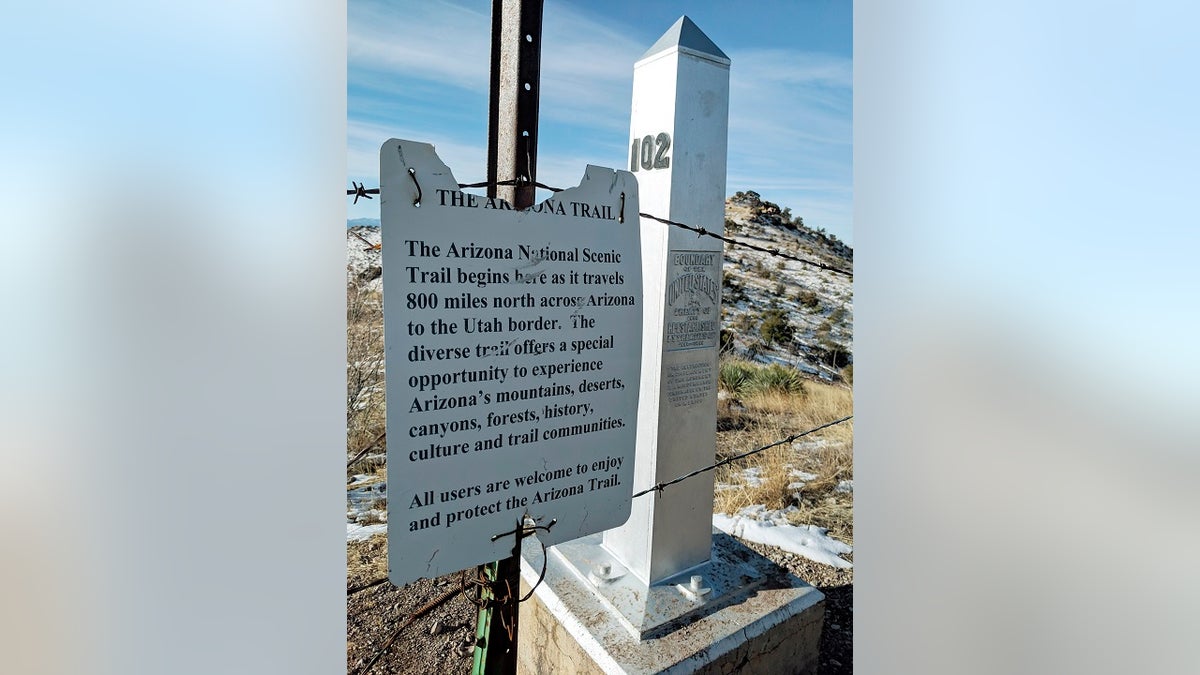Trump fast-tracking US-Mexico border wall in four states
Will his commitment to securing the border help him win in 2020? Former Tuscon police officer Brandon Tatum weighs in.
President Trump's long-promised border wall is igniting a fight over public lands in Arizona amid concerns the barriers would significantly change the look of the landscape.
Construction crews have been moving ahead with the building of 161 miles of barriers along the state's 372-mile long international boundary with Mexico. Nearly all of the construction is slated to take place on government-owned land -- national parks, monuments, conservation areas and other undisturbed terrains -- and areas where no barriers exist, AZ Central reported.
"Now the construction is moving into areas without any barrier, which are primarily the most remote, mountainous areas along the Arizona border and some of the best corridors for jaguars and other species," said Brian Segee, a senior attorney with the Tucson-based Center for Biological Diversity.
The group filed a lawsuit last week to halt the construction of border barriers, claiming that Trump unlawfully diverted $13 billion in military funds to build more fencing.

The northward expanse of the Arizona Trail, an 800-mile path starting at the U.S.-Mexico border near Hereford, Ariz., and ending at the Utah border. (Tess Mullaney via AP, File)
At the Organ Pipe Cactus National Monument near Lukeville, crews have razed saguaros and unearthed wetlands at the San Bernardino National Wildlife Refuge.
At Border Monument 102 at the Coronado National Memorial, barbed wire is slated to be replaced with concrete footers holding 30-foot-tall metal slats spaced four inches apart. A wall would alter views of the San Pedro Valley, where explorer Francisco Vasquez de Coronado was believed to have entered into the United States in 1540.
"I think it's terrible," Kimberly Knebel told the website. "It's going to ruin the landscape. It's not going to be pretty. What is up there now, it's hardly noticeable."
Hiker Tess Mullaney, 28, called for the government to abandon plans to build two miles of new fencing that experts said could destroy the monument, which marked the southern terminus of the 800-mile long Arizona Trail traversing upward to the Utah border.
“To remove not only this symbolism, but also the beauty, seclusion, protection, and wildlife migratory abilities in this area would be saddening to all who enjoy it,” she said.
Some analysts said there have never been issues with illegal border crossers in the rugged, mountainous area.
David Mabe contended that the wall was needed to keep out drug and human smugglers. While out with his dog near the trail, the retired U.S. Border Patrol agent said the barrier was a necessity.
"I know these mountains intimately," he said.
"The border wall, it doesn't keep good people from coming across. It's just slowing down people making a lot of money off of people," he added. "And they're not good people. ... The smugglers, the drug smugglers, the human smugglers, there is nothing good about those people."

The southern terminus of the Arizona Trail, an 800-mile path that starts at the U.S.-Mexico border near Hereford, Ariz., and ends at the Utah border. (Tess Mullaney via AP)
CLICK HERE TO GET THE FOX NEWS APP
The Trump administration marked 100 miles of wall construction earlier this year, describing it as a "milestone achievement." Opponents described it as a vanity project for the president, who made the wall his central campaign promise.
The Associated Press contributed to this report.























